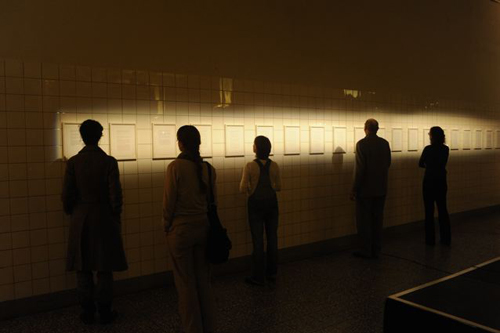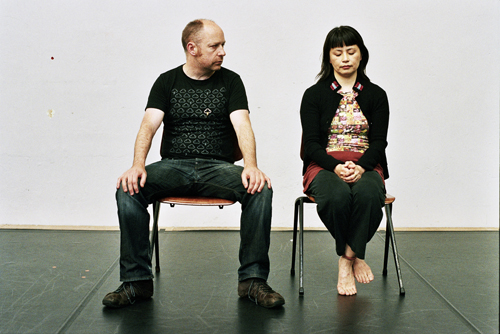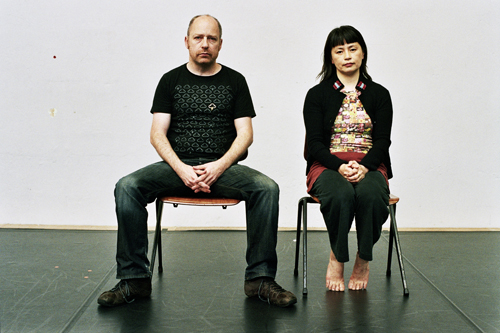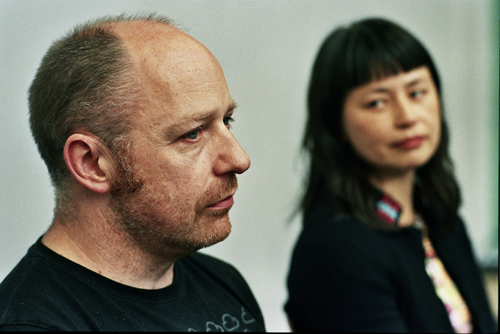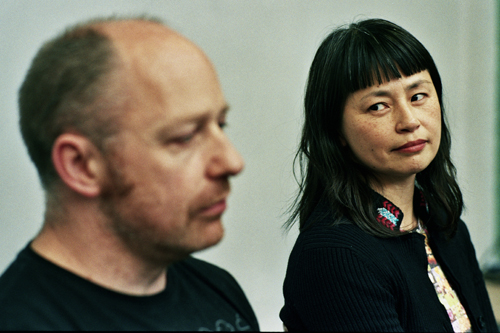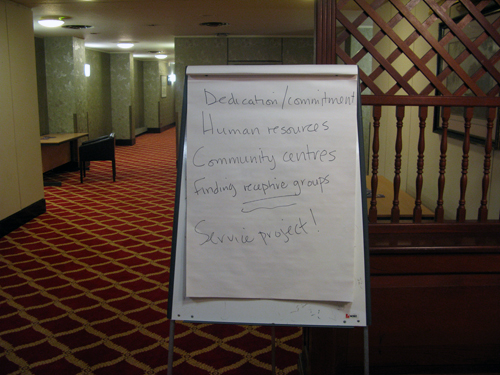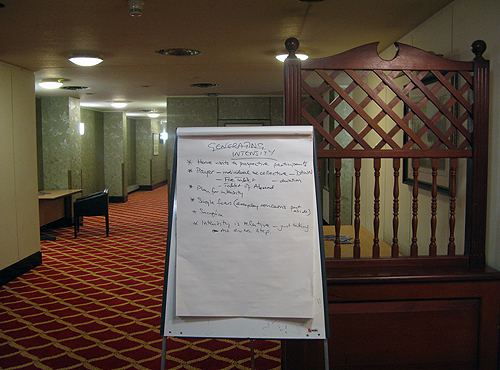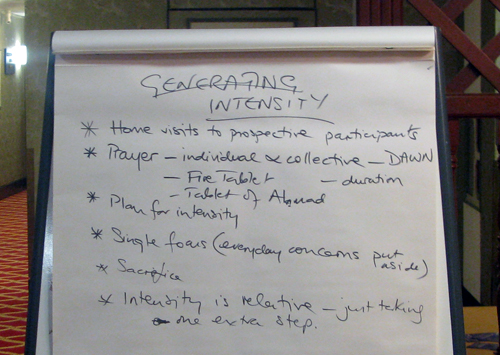Nice conversation with Robin Rimbaud / Scanner after Forced Entertainment’s Spectacular last week. Via talk of John Cage and the amazing Ubuweb we ended up at archives. Robin span thru a fantastic description of the audio tapes he started accumulating from the age of about 11 – home audio-taping TV episodes of Spiderman no less (pre VCR), with his own introductions – talking from these thru the recordings and collages he made at school (crash editing teachers in the classroom, random corridor chatter and flushing toilets) to the tapes he made of concerts and talks he attended as a teenager – all this before his own musical/sound work/recordings as such really began. Conversation about if and when to digitize or set free the above, and also the strange audio traces that accumulate behind each of us these days.
For me a small but tangible sign of this was back in the summer… Mark sent a scan of a Joy Division ticket, from a concert back in 1980 (19th April, Ajanta Cinema, Derby) that he and I had gone to – the fourth time we’d seen the band, and the second-to-last gig they’d ever play. Googling that I found this link with a few pictures from the gig, a black and white shot of the venue (so weird to see it) amongst a whole archive of visual material, dates etc. Also in the same place a track listing and a list of various bootlegs which had featured the music from the gig that night in Derby. I was pretty intrigued by the thought that there was a recording and set out Google searching to see if I could find mp3s. Took me about half an hour… mainly leapfrogging thru fan sites with listings or people selling CDs, slowly closing in though. Must’ve been around 1am when I found what I was looking for (at this full-on, comprehensive JD bootleg site) and as the first tracks downloaded I was really quite goose-bumped to hear them – sparks of short circuit arcing backwards and forwards in time. Strange thing about the yell of a crowd that you know you are in… esp a small one I guess. You can’t hear anything of course. But you know it’s there. Plus the fact that I had no idea the event was recorded. A night a long time ago (call it 28 years) that is totally lost in any case, but then like this some audio spill from it reaches you, compressed, distorted, just a trace really but one that contains more of it than you’d have guessed at. The sound brings back the smell, the light and the heat. And all that out of Google.
*
This fragment (below) from my Spill opening address last year, also tracked back to the Ajanta, this time by way of a gig by The Fall:
Mark E. Smith. Ajanta Cinema Derby, sometime in 1978 or 1979, back at the time when he was talking at least as much as singing, punctuating the songs with extended delirious rants about the proliferation of psychics and Cash & Carry stores or the possibility of time travel or how much he did not like Doncaster or the audience or Stalin you could never be sure which. Huge fucking row of music, small audience. A venue that used to be, by some incomprehensible irony, The Derby Playhouse (I mean before they built that new one with hexagonal barstools and purple orange cross-hatch carpets) and was by then (the old playhouse, re-named as Ajanta Cinema), a semi-derelict music venue run by some Asian guys maybe as a front for a drugs ring at least if you believed what was gonna be in the paper ten months later, who knows.
Just in front of the stage there is a space that used to be seats, but which has been for some months now an extended no-mans land, a zone of smashed floorboards and seat-remains – a cleared space created when the first gig took place here and at which the room allowed for the crowd was patently not big enough and so by Mutual Agreement the seats were kicked to pieces by those present, the debris for the most part lifted high and Hurled Asunder, causing minor injuries. It is this space – directly to the front of the stage that Smith has his eyes on, when he turns around, neglecting the routine that he himself has characterised as ‘backs to the audience and pass the hair-dye mate’ though he of course has no hair dye. This space, right there in front of the stage, this no mans land, is clearly bothering him, big time. Maybe cos there’s no one in it – I mean there’s only fifty people in the venue max and most of them are leant against the walls holding lager cans. And maybe it’s bugging him – this space – cos he’s not sure who’s it is. I mean – he’s on the stage and he’s wandering all around it like he owns the fucking place, which for all extents and purposes he does – but somehow he doesn’t seem so happy there on the stage – like he’d really like to be somewhere else, in some other place, a bigger one perhaps. Like somehow the stage is too small because it isn’t a whole world.
What does the character Price say about the nightclub in Trevor Griffith’s play Comedians? Something like: When I stand up there on the stage – I still hit my head on the ceiling. It might be literally true – but mainly of course he means it more like a metaphor – a way to say, that the world which Capitalism has on offer isn’t big enough yet to accommodate his dreams or imaginings.
Anyhow back in Derby in either 78 or 79, Smith wont take it for long. He’s at the very edge of the stage by this point, walking back and forth, pacing on the exact border, looking down off the low rise and into that other space – that other world, no-one in it and everyone eyeing it, a space in this case between him and the rest of us, a space not quite his and not quite claimed by the rest of us. Time passes. And then there’s a moment like there always is, a moment so good I won’t ever remember it, and could not in any case describe it, a moment in which he makes the jump and steps off the stage. He’s off, he’s over, gone into the emptiness down there, the band oblivious or inured to his probably amphetamine whimsy, and the music’s all thump and screech and grind and he’s wandering, caterwauling, out into the no-man’s land/wasteground that he’s somehow made his own now, barely tethered by the microphone lead and in some ways never to return.
That, was an inspiration. And no mistake of all.
The rest of the Spill text is included in the publication/collection Live Art UK/LADA’s Live Art Almanac, alongside essays by Lyn Gardner, Guillermo Gomez-Pena, Daniel Gosling, Leslie Hill and Rebecca Schneider amongst others. Copies from LADA’s bookshop – Unbound.
